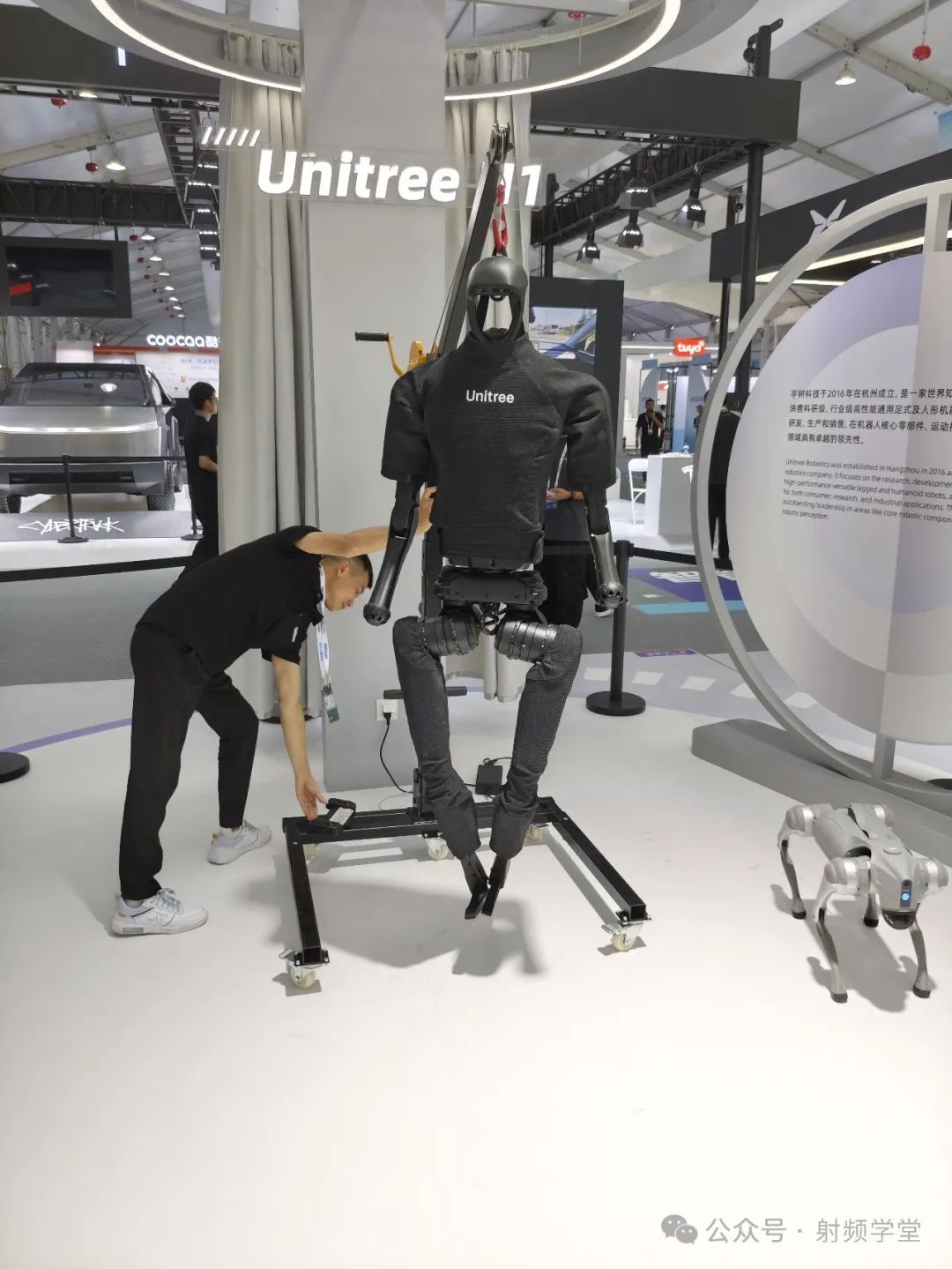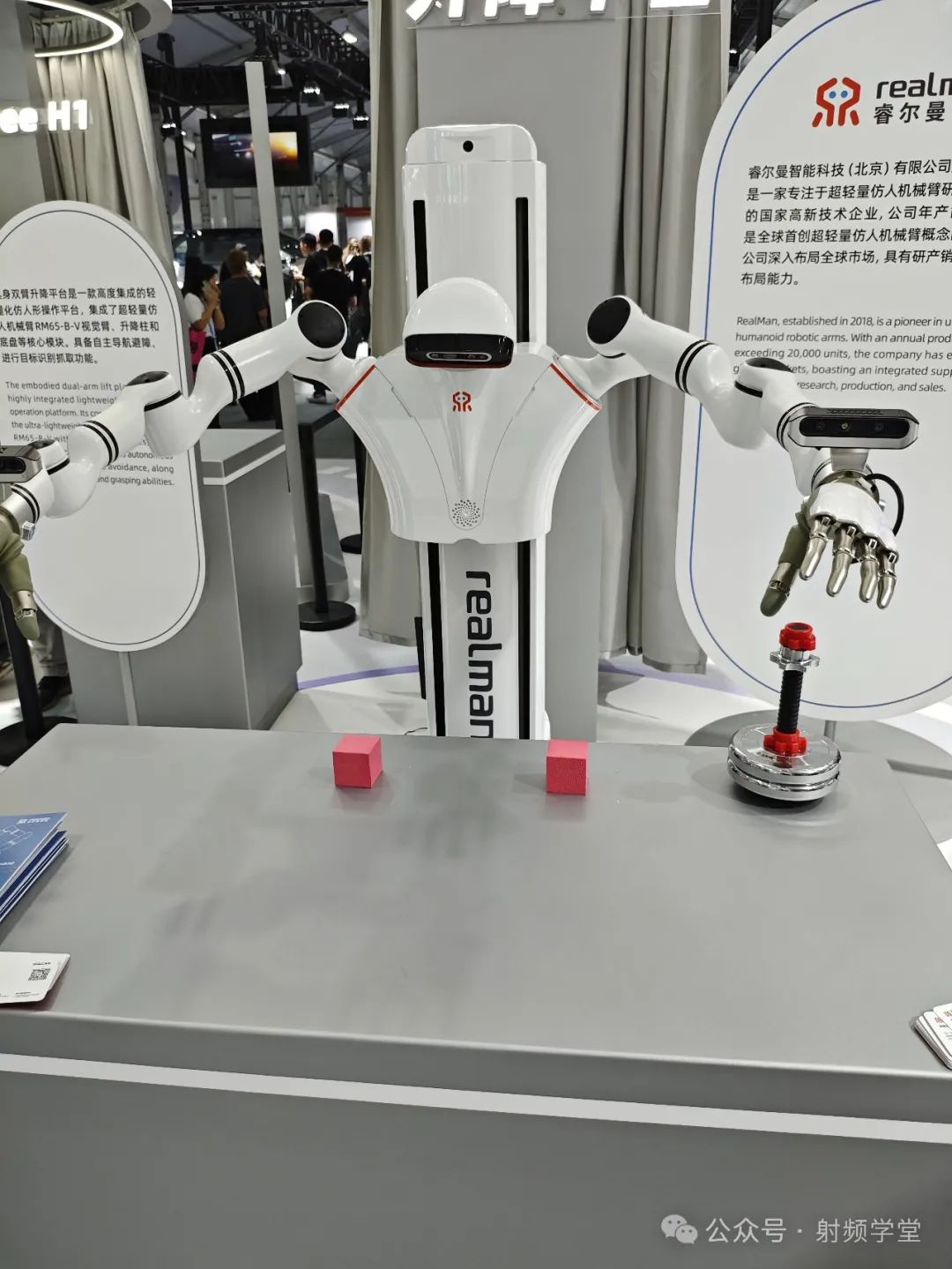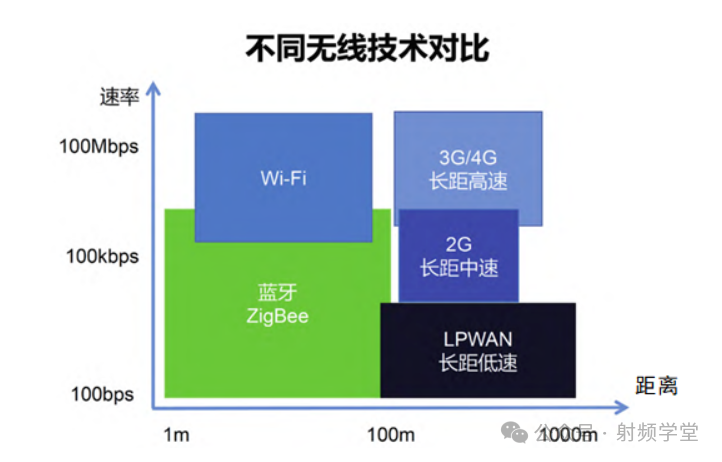RF engineers should better understand applications outside their industry, because it is not your competitors that will disrupt you, but possibly AI. Imagine a day when a large AI model starts to excel in RF design, capable of simulating, debugging, and testing by itself…
Then RF engineers will truly be overwhelmed; we can work 996, while AI can operate 24/7.
Fortunately, large AI models have not targeted our field yet; at least not today at the Yunqi Conference…
Today at the Yunqi Conference, what attracted me the most were these humanoid robots, with various joint flexibility and stability, as well as their intelligence. I had only seen them in short videos before, but seeing the real thing was truly shocking.





In addition to the shock, I also discovered a point regarding RF; humanoid robots also require RF functionality, especially in their visual capabilities and information transmission, which rely on RF modules.

No.1 Millimeter Wave Radar
In visual functions, in addition to various visual sensors and cameras, laser radars and millimeter-wave radars are also used.
Regarding millimeter wave radar, it has been introduced several times in previous articles on RF Classroom. (link)
Millimeter wave radar is a device that uses millimeter waves for detection. Let’s discuss the advantages and disadvantages of millimeter waves.
The working wavelength of millimeter waves is between 10mm and 1mm, corresponding to a working frequency of 30GHz to 300GHz, which is a segment of the electromagnetic wave spectrum between microwaves and light waves. Therefore, millimeter wave radar combines the dual advantages of microwaves and light waves, summarized as follows:
|
Small Antenna Aperture, Narrow Beam: High tracking and guidance accuracy; easy to perform low-angle tracking, resistant to ground multipath and clutter interference; high lateral resolution for near-air targets; high angular resolution for area imaging and target monitoring; narrow beam’s high anti-jamming performance; high antenna gain; easy detection of small targets, including power lines, poles, and projectiles. |
|
Large Bandwidth: High information rate, easy to use narrow pulses or wideband frequency-modulated signals to obtain detailed structural features of targets; wide spread spectrum capability, reducing multipath, clutter and enhancing anti-jamming capability; adjacent frequency radars or millimeter wave identifiers can easily overcome mutual interference; high distance resolution, enabling accurate target tracking and identification capabilities. |
|
High Doppler Frequency: Good detection and identification capability for slow and vibrating targets; easy to utilize target Doppler frequency characteristics for target feature identification; good penetration characteristics against dry atmospheric pollution, providing excellent detection capability under dust, smoke, and rain/snow conditions. |
|
Good Anti-Stealth Performance: The absorbing materials currently coated on stealth aircraft are all designed for centimeter waves. According to foreign studies, millimeter wave radar illuminates stealth targets, forming strong electromagnetic scattering at multiple locations, significantly reducing their stealth performance. Therefore, millimeter wave radar also has potential for anti-stealth. |
Of course, there are also disadvantages, such as attenuation in high humidity environments like rain, fog, and wet snow, and the impact of high-power devices and insertion loss reducing the detection range of millimeter wave radar; poor penetration capability through bushes compared to microwaves; high component costs and relatively high processing precision requirements, with the development of monolithic transceiver integrated circuits being relatively slow.
The applications of millimeter wave radar mainly include:
|
High-precision multi-dimensional search measurement: for high-precision distance, azimuth, frequency, and spatial positioning measurements; |
|
Radar installation platforms have strict requirements for size, weight, vibration, and other environments: millimeter wave radar antennas are small and lightweight, easily meeting the special environmental requirements of portable, airborne, vehicle-mounted, and satellite-mounted platforms; |
|
Target feature extraction and classification identification: Millimeter wave radar’s high resolution, wide operating frequency band, large numbers of Doppler frequency responses, and short wavelengths make it suitable for important tactical requirements for target classification and identification; |
|
Small target and short-range detection: The short wavelength of millimeter waves corresponds to smaller optical zone sizes, making it more suitable for small target detection than microwave radar. Except for special long-range millimeter wave radar for space target observation, general millimeter wave radar is suitable for short-range detection below 30 km; |
|
Strong resistance to electronic warfare interference: Millimeter wave windows can use a wide frequency band, making it easy to perform wideband spread spectrum and frequency hopping designs. At the same time, millimeter wave radar faces interference challenges from reconnaissance and jamming equipment due to its wide frequency band, atmospheric attenuation, and narrow beam, giving it better anti-jamming capabilities compared to microwave radar. |
Therefore, millimeter wave radar is widely used in military fields such as missile guidance and artillery control. Similarly, in conjunction with laser radar and cameras, millimeter wave radar is also widely applied in intelligent vehicles and autonomous driving. Of course, these characteristics of millimeter wave radar can also provide accurate data for robots to perceive their surroundings.
No.2 Wireless Communication Modules
In this era of the Internet of Things, no high-tech electronic product can operate without wireless communication. Without wireless communication, even the best devices become blind.
Wireless communication modules can be used for communication between robots and remote controllers, as well as between robots themselves. In short, whether it is communication between robots and humans, or between robots and objects, it cannot do without wireless communication modules. Common wireless communication methods for mobile robots include: cellular communication, Bluetooth, ZigBee, WiFi, LPWAN, UWB, etc. Different communication technologies have varying communication distances and speeds, allowing for the selection of appropriate technology based on needs.

-
Cellular Communication Technology
Current cellular communication mainly includes 4G and 5G, where 4G refers to the fourth generation mobile communication technology, which includes TD-LTE and FDD-LTE standards, centered on Orthogonal Frequency Division Multiple Access (OFDMA) technology, with user peak rates reaching 100Mbps to 1Gbps. It is a broadband access and distributed all-IP architecture network that supports various mobile broadband data services.
5G is the evolution of existing wireless communication technology after 4G. The key technologies of 5G can be further refined into ten key technologies: large-scale antennas, ultra-dense networking, full-spectrum access, new multiple access, new multi-carrier, advanced modulation coding, terminal pass-through technology, flexible duplexing, full duplex, and spectrum sharing.
5G emphasizes user experience rates, reaching the Gbps level. Compared to 4G, the biggest change in 5G is that its service targets have expanded from communication between people to include connectivity between people and things, and between things and things, achieving full connectivity.
Cellular communication has advantages such as high speed, low latency, high stability, and high reliability; however, its network equipment is expensive, requires large quantities, and needs support from network operators.
Today, a humanoid robot company experienced slow cellular communication rates due to the large crowd at the conference, affecting the robot’s operation.
-
Bluetooth Technology
Bluetooth technology originated in 1994, developed by Ericsson in Sweden. It uses frequency hopping technology and operates in the frequency band of 2.402GHz-2.480GHz. To date, it has been updated through ten versions, with communication ranges extending from a few meters to hundreds of meters. Bluetooth technology is widely used in mobile devices such as smartphones, PDAs, PCs, GPS devices, and many wireless peripherals (Bluetooth headsets, Bluetooth keyboards, etc.).
Bluetooth technology also keeps pace with the development of the Internet of Things. The latest Bluetooth 5.0 data transmission rate can reach 24Mbps, with stronger privacy features and IPv6 network support. Bluetooth 5.0 adds indoor positioning assistance features, allowing for indoor positioning with an accuracy of less than 1 meter when combined with Wi-Fi. In the smart home field, Bluetooth devices using Bluetooth Smart technology can communicate with each other without a network, allowing smart home devices to continue functioning even without Wi-Fi.
Bluetooth’s advantages include fast speed, low power consumption, and high security; however, it has fewer network nodes, small networking capability, and is not suitable for multi-point deployment.
-
ZigBee Technology
ZigBee was officially proposed in 2003 to address the high complexity, large power consumption, short range, and small networking scale of Bluetooth communication protocols. ZigBee can operate in three frequency bands: 868MHz-868.6MHz, 902MHz-928MHz, and 2.4GHz-2.4835GHz, with the last band being universally accepted worldwide, offering 16 channels and is a free, no-application-required radio frequency band. The transmission rates for the three bands are 20kbps, 40kbps, and 250kbps, respectively.
ZigBee utilizes a self-organizing approach for communication and is the most famous wireless communication protocol in the wireless sensor network field. In wireless sensor networks, when a sensor’s message cannot be smoothly transmitted through a communication path, dynamic routers quickly find another nearby channel to transmit data, ensuring reliable information delivery.
ZigBee is not a mainstream wireless communication technology, but it is favored by some manufacturers due to its low power consumption, low cost, low speed, high capacity, and long battery life.
The main advantages of ZigBee include high security, low power consumption, strong networking capabilities, large capacity, and long battery life. However, it has high costs, poor anti-interference capabilities, and the ZigBee protocol is not open source, with short communication distances.
-
Wi-Fi Technology
Wi-Fi is a short-range wireless transmission technology that uses standards IEEE802.11a and IEEE802.11b, typically operating in the 2.4GHz frequency band, with a transmission distance generally reaching around 100m. The networking method is relatively simple, consisting of a wireless network formed by an access point (AP) and wireless network cards. Currently, Wi-Fi is used in many places such as hotels, restaurants, libraries, office buildings, and homes. It allows internet access with any device that supports Wi-Fi and is also used in smart home control for devices such as TVs, air conditioners, lights, and windows.
The main advantages of Wi-Fi are flexibility, mobility, and easy deployment; however, it is prone to interference, has low transmission speed, short transmission distance, and relatively poor security.
-
LPWAN Technology
LPWAN (Low Power Wide Area Network) is designed for low bandwidth, low power consumption, long distance, and massive connectivity for IoT applications. Among various LPWAN technologies worldwide, NB-IoT and LoRa are the two most widely applied technologies.
LoRa is dominant among unlicensed frequency spectrum technologies. In addition to having large network capacity, low power consumption, strong signal penetration, stable high-speed mobile signals, and positioning capabilities, its biggest advantage is that it can achieve longer wireless RF communication distances under the same power consumption conditions. LoRa can be widely applied in industrial control, urban management, power grid inspection control, oil and gas pipeline monitoring, agricultural irrigation, environmental monitoring, and other fields.
The advantages of LPWAN technology include large network capacity, low power consumption, strong signal penetration, stable high-speed mobile signals, and positioning capabilities, but its transmission efficiency is relatively low.
-
UWB Technology
UWB (Ultra Wide Band) is a carrierless communication technology that uses non-sinusoidal narrow pulses in the nanosecond to microsecond range to transmit data, achieving data transmission rates of hundreds of Mb/s to several Gb/s within a range of about 10m. UWB has strong anti-interference capabilities, high transmission rates, extremely wide bandwidth, low energy consumption, and low transmission power, making it primarily used in indoor communication, high-speed wireless LAN, home networks, cordless phones, security detection, positioning, radar, and other fields.
Due to the extremely short time width of UWB pulses, it can also use high-precision timing for distance measurement. Compared to Wi-Fi and Bluetooth positioning technologies, UWB has the following advantages: strong anti-multipath capability, high positioning accuracy, high timestamp accuracy, strong electromagnetic compatibility, and relatively high energy efficiency.
Thus, the main characteristics of UWB technology are strong anti-multipath capability, high positioning accuracy, high timestamp accuracy, strong electromagnetic compatibility, and relatively high energy efficiency, but its signals are easily obstructed by obstacles, and device costs are high.
No single technology can solve all application scenarios; combining them can achieve the most effective results. This is what we RF engineers need to do.

精品推荐
【射频入门】【芯片滤波器】
版权声明:射频学堂原创或者转载的内容,其版权皆归原作者所有,其观点仅代表作者个人,射频学堂仅用于知识分享。如需转载或者引用,请与原作者联系。射频学堂转述网络文章,皆著名来源和作者,不可溯源文章除外,如有异议,请与我们联系。
文章转载,商务合作,广告推广,射频社群等,请 加微信:RF_Centered,并注明合作事项即可
请戳右下角,给我一点好看!